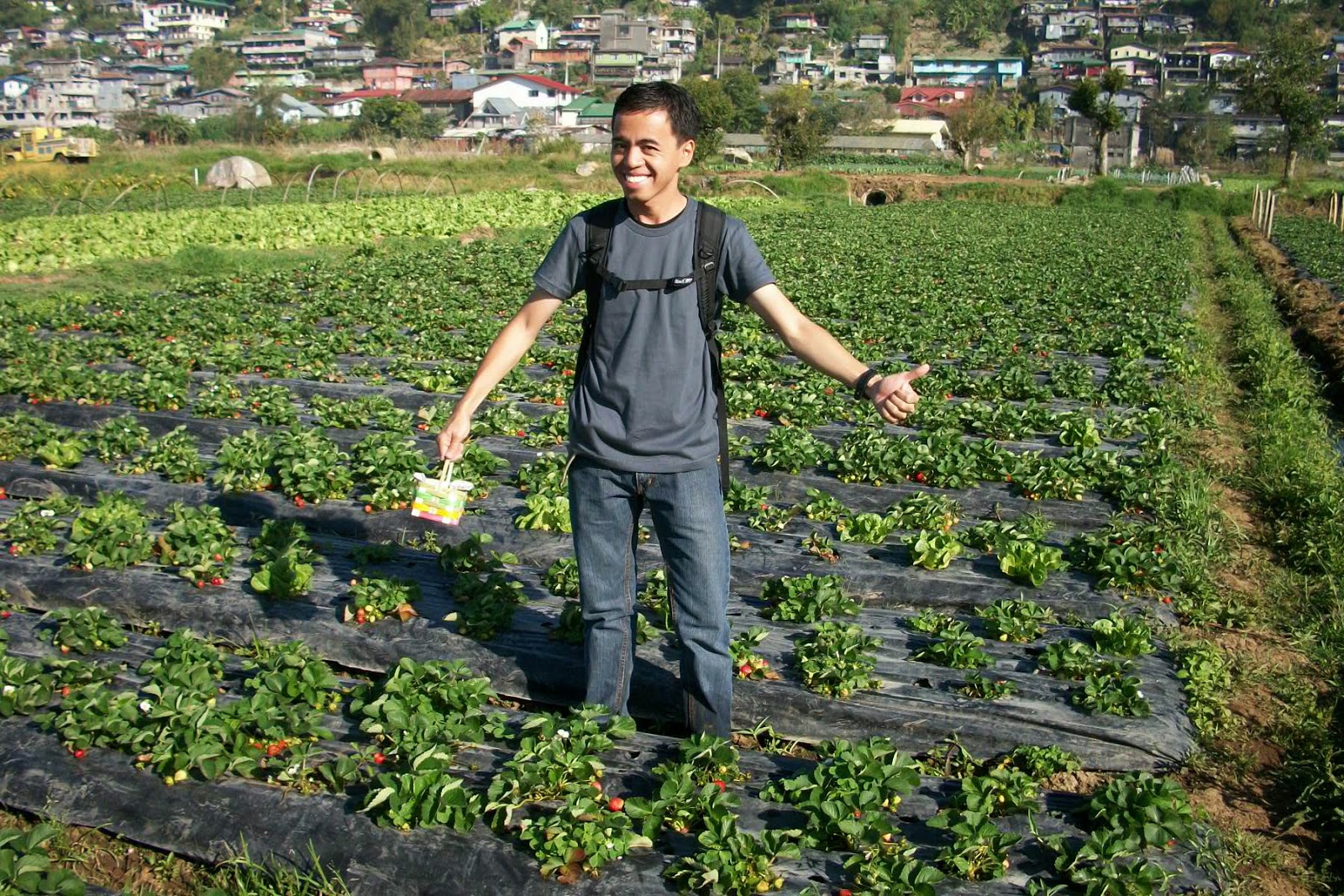Baguio City, the gateway to the Cordilleras has almost become synonymous with strawberries. The appealing climate around the city and its neighboring municipalities favors the cultivation of this luscious fruit which became a source of livelihood to its people. About 30 minutes away from Baguio City is La Trinidad valley, where its strawberry farms are becoming a popular attraction to seasonal pickers.
Strawberries are simply irresistible. The sweet and juicy texture of the fruit is just heavenly to the taste buds of fruit lovers like me. While eating strawberries are truly a delicious treat, nothing can be more delightful and exciting than picking fresh strawberries straight from the field. Though I've been to the City of Pines a lot of times, strawberry picking has been a miss out summer activity that I always wanted to do.
It was the 1st week of March, just in time for the annual Strawberry Festival in La Trinidad. And it's also the season where visitors can have the opportunity to gather fresh strawberries from the farm. Since I still have some extra time to spend after my nature trip in Sagada, I headed back to Baguio City and decided to have an overnight stay and visit the nearby strawberry fields of La Trinidad on the next morning.
A chilly Wednesday morning greeted me as I woke up and prepare for the exciting day. On my way to the strawberry fields, I saw this giant strawberry figure that seems to welcome its lovely visitors. And a few walks away is the main entrance to the farm.
A chilly Wednesday morning greeted me as I woke up and prepare for the exciting day. On my way to the strawberry fields, I saw this giant strawberry figure that seems to welcome its lovely visitors. And a few walks away is the main entrance to the farm.
Just beside the entrance, you can see cheerful workers segregating mounds of freshly pick strawberries ready for distribution and selling. Before I entered the premises, I was asked by one of the farmers If I'll just buy from the day's harvest or do the picking by myself. Of course, I don't want to miss the chance to "play" around the fields.
Visitors can have the option to pick all the berries they want and the caretakers will give them a box to put the all their harvest. In my case, a small basket is all I need since I just wanted to enjoy the picking. The price of the gathered berries will then be computed according to its total weight.
Alright, so it’s picking time! But before getting started, I was given some reminders by the farmers and taught me the proper way of picking strawberries. The ripe berries which is bright red in color are the ones that I should look for and leave the unripe ones. No other tools needed coz I can just use my bare hands in breaking the soft stems gently and be extra careful not to pull the entire plant.
The fun has just started the moment I entered the strawberry fields holding my little basket. I felt I was a kid playing in the highlands while basking under the morning sun.
I noticed that the soil beds of the strawberries plants were protected with a layer of wide, black plastic covering. Well maybe the plastic liner keeps the fruit from touching the ground since the plants are low lying. But when I asked the farmers, their exact explanation were the plastic serves as a mulch to conserve the much needed moisture, to reduce weed growth and to improve the over all health of the soil.
 |
Aside from strawberries, vegetable crops such as cabbages, broccolis and varieties of lettuces are grown around the field. La Trinidad valley is a major producer and supplier of highland vegetables in the Philippines. Flowers which are also grown within the valley are the source of cutflowers that are being arranged and displayed for the annual Panagbenga Flower Festival in Baguio City.
 |
| Lettuce beds just beside the strawberry farm |
 |
| and more veggies.. |
 |
| My little basket filled with freshly picked strawberries. |
 |
| more strawberries |
I was wondering why the price of freshly picked strawberries are more expensive than the ones ready for selling. But then again, the farmers told me that some of the visiting pickers might accidentally "harm" the immature plants while picking which can be costly to the growers. But don't worry, the friendly strawberry farmers will teach you on how to pick the berries properly.
 |
| The hardworking strawberry farmers of La Trinidad |
But before I even finish the picking, the unfortunate yet funny incident happened. My right foot was accidentally drenched into a pool of mud near the edge of a soil bed! Oh boy, I guess getting dirty was really part of the experience and just laughed at it. I should have worn slippers instead. Good thing there's a wash area within the farm or I'll be going back to my lodging house with my shoes soaked in mud.
 |
| And look how muddy my shoes was |
In the end, it was entirely a fun and a refreshing morning gathering the strawberries. I was the only picker during that time and felt that I took control of the whole field. All the sweat was truly worth it and I ended with a smile on my face. Even the heat didn't bother me from enjoying the fruit picking . Be sure to catch this fun activity the next time you visit the Summer Capital. Cheers!!






























.jpg)

.jpg)




